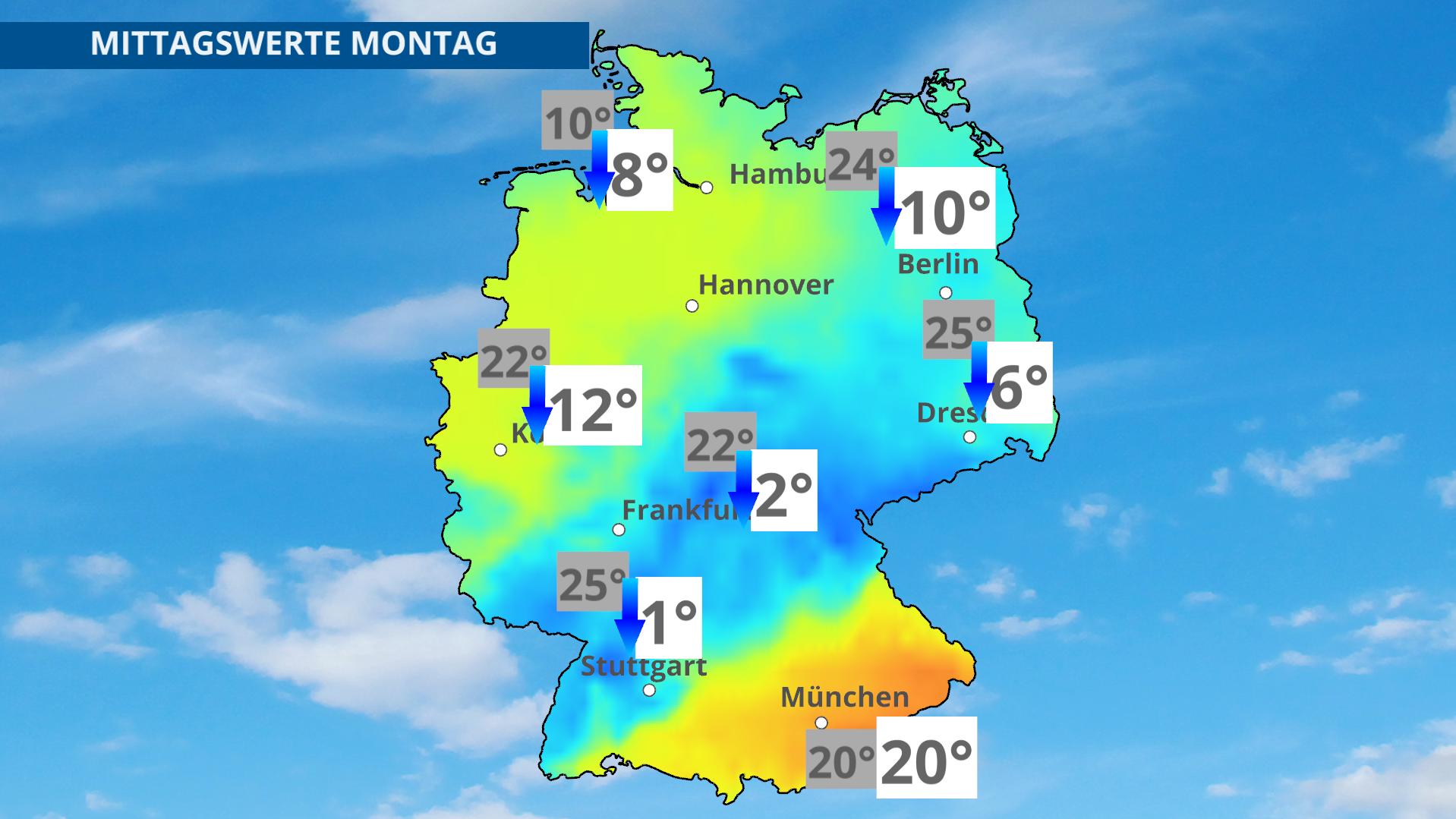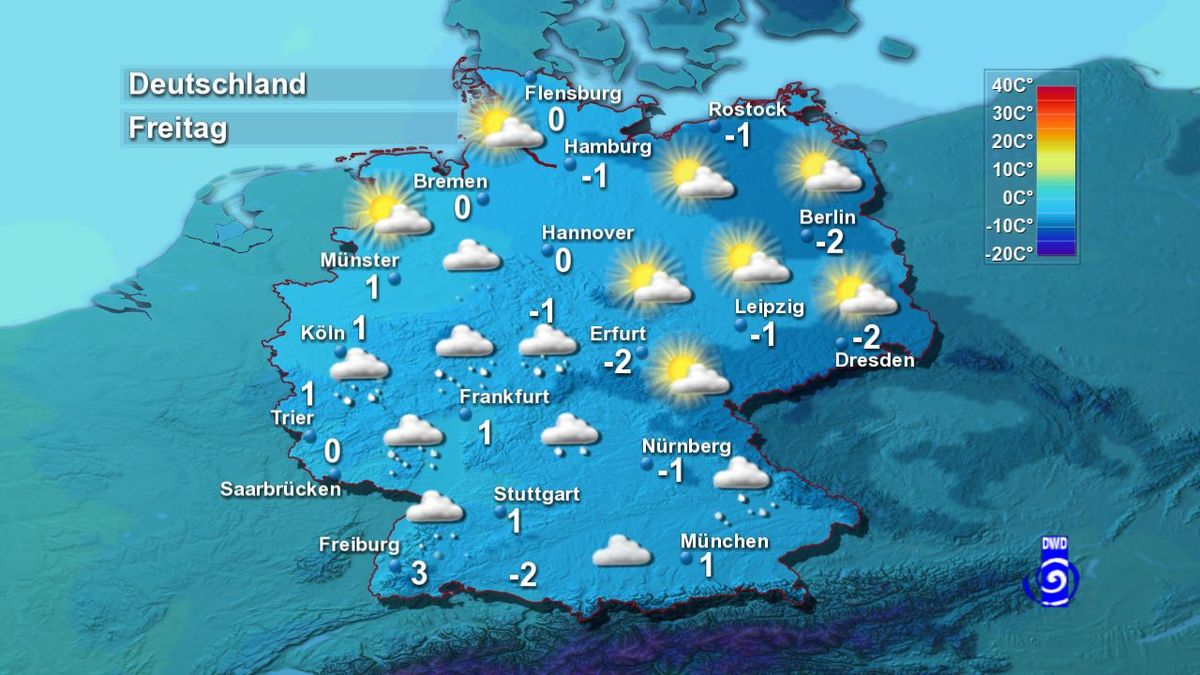
In Berlin, there are 1,730 sunshine hours per year. Usually, September is still an acceptable month cold and gray weather usually arrives in the second half of October or more likely in November, when the first snowfalls are also possible. In autumn, from September to November, the flow of Atlantic fronts, which had never completely stopped, resumes with greater frequency, although a period of good and unseasonably warm weather can sometimes occur, a sort of Indian summer, called Altweibersommer, in September and sometimes in October. On sunny days, thunderstorms can break out in the afternoon. The highest record is 38.4 ☌ (101.1 ☏) and was set in late June 2019. Occasionally, there may also be heat waves, with highs of 35 ☌ (95 ☏) or more, maybe just for a day or two, which are becoming more frequent due to global warming. However, some hot days, with highs around 28/30 ☌ (82/86 ☏), occur every year. There is some variability from year to year: there may be summers characterized by long periods of warm and sunny weather, and others in which cool and rainy weather is more frequent. Atlantic depressions can arrive even in this season, bringing some cool and rainy days, while in periods of good weather, the temperature can get close to 30 ☌ (86 ☏). However, nights are cool, and sometimes even a bit cold. Summer, from June to August, is pleasantly warm: daytime temperatures hover around 23 ☌ (73 ☏) in June and 25 ☌ (77 ☏) in July and August. In early May, it can still get cold with the passing of the weeks, the first warm days occur, with temperatures exceeding 25 ☌ (77 ☏) and the first thunderstorms in the afternoon. In April, cold periods are still possible, with late snowfalls, especially in the first half of the month, but also the first mild days, when the temperature can exceed 20 ☌ (68 ☏), especially in the second half of the month. March is often a cold month, with frequent snowfalls. Spring, from March to May, is a season characterized by unstable weather, with the first warm days, but also the return of cold weather. The coldest record is -25.3 ☌ (-13.5 ☏) and was set in January 1987. In recent years, it has become rarer, however, cold waves can still occur, with temperatures dropping to -12/-13 ☌ (8/10 ☏) or below. In the past, once every few years, it happened that the temperature remained below freezing for an entire month. Later, when the westerlies start to blow again, flowing above the layer of cold air, they can bring snow, sleet, rain mixed with snow or rain that freezes.Īt other times, cold air masses of Siberian origin can cause snowfalls and frosts, sometimes intense.

Then, there are situations in which a high pressure system dominates, and the weather is cold and gray, with night frosts, and daytime temperatures around freezing or even a little below. When Atlantic currents prevail, there may be relatively mild periods, when it can rain and the temperature can exceed 10 ☌ (50 ☏) in these cases, however, wind and humidity can increase the feeling of cold.

However, during winter, different situations can occur. Winter, from December to February, is cold, with average temperatures hovering around freezing.


 0 kommentar(er)
0 kommentar(er)
